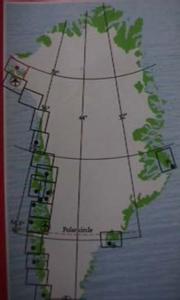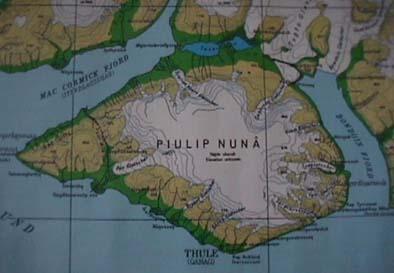
|
|
14 August, 2000
Dr. Radtke, Josh Ruhl (Dr. Radtke's assistant) and I are traveling this
afternoon to Baltimore from Honolulu. Finally, two weeks ago, all of the
permits fell into place after a year of negotiating with various agencies
including the Fishing and Hunting Association at Qaanaaq, the Danish Polar
Center, the Home Rule Government of Greenland, and the United States
Airforce Base at Thule. They have agreed to allow us to go in and collect
fish at two sites, Kap York and Lake Tassersuit. We will work with the
local fishermen and hire a local hunter with his dog as guide and
protection, against polar bears in parcticular.
I am very excited to be finally doing the study that we had prepared to do
last year. (Please see my journal entries of August1999 for details.) Our
plan is to collect 40 fish in the lakes at the two locations mentioned
above. We will sex, size the fish, and remove their otoliths--a bony
sturcture in their "ear"-- for work up at the University of Hawaii lab when
we return. The lab work will show us whether the fish has traveled from
fresh water to salt water or vice versa during any point in its life
history. This can be told by the amount of elemental strontium in the
otolith. If there is a significant amount, then they have lived part of
their lives in salt water where strontium is more prevalent. The rings in
the otoliths will also be used to age the fish, similarily to how
consecutive dark and light rings in a cross section of a tree trunk denote
years of age.
We will arrive in Baltimore tomorrow, rest, and catch the late night flight
to Thule airbase from Baltimore Washington International Airport. The next
day we fly by helicopter to Qaanaaq where we will set up a base and go by
helicopter or boat to Lake Tassersuit. (See maps.) There we will set up
camp, catch fish, and then fly back to Qaanaq to recoup and treat the
samples. After this we go to the second study site Kap York from Qaanaaq,
repeat the collection process there, fly back to Qaanaaq, treat the samples,
and then return to Thule Air Base and back to the states.

Map of Greenland showing Thule Air Base (plane symbol) and Qaanaaq area at the upper left.


Contact the TEA in the field at
.
If you cannot connect through your browser, copy the
TEA's e-mail address in the "To:" line of
your favorite e-mail package.
|
